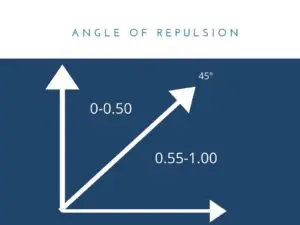This post was originally published February 10, 2020, and was updated August 29, 2020, August 29, 2021, August 19, 2022, and July 7, 2023.
If you’ve been at a Level 6 or 7 gymnastics meet recently, no doubt you’ve seen the new vault setup. Gymnasts now vault from the table onto a mat stack, performing a handspring, Tsukahara, or Yurchenko timer, and it can look as if you walked in on a practice, not a meet! The first year the Level 6/7 vault changed, I even went to a couple of meets where some of the coaches didn’t realize the vault had changed. Yikes!
Gymnasts, coaches, and judges alike have spent considerable time trying to determine WHAT, exactly, constitutes a great Level 6/7 vault. I’ve judged this vault several times, attended numerous clinics to learn about it in-depth, and had countless conversations with coaches about their perspectives on separating the good vaults from great ones.
Level 6/7 Vault Updates
Each year, the committees meet to discuss the deductions for the Level 6/7 vault, as they relate to the intent of the vault. If you’re looking at the original USA Gymnastics Code of Points, you’ll want to know the updated deductions since it came out. Here they are, broken down by season. If you’d like to read all of the J.O. updates, they are available on the USA Gymnastics website in the Women’s Program Committee Minutes section.
Modifications for the 2023-24 season
Level 7 gymnasts are allowed to use a pit pillow as part of their landing surface. This is allowed at all sanctioned competitions and REQUIRED at State Meet and above.
Modifications for the 2022-2023 season
Level 6 gymnasts who do not land on their feet first will receive a 1.00 deduction (it is no longer a VOID vault). This applies to Yurchenko and Tsukahara entries ONLY.
A handspring entry vault that does not land on the feet first is still a VOID vault.
Changes in deductions:
- Hip angle – up to 0.30
- Arched body wording is changed to “excessive arch”.
- Steps with hands – 0.10 each (maximum 0.30)
- Hops with both hands simultaneously – 0.30
- Wording change: “Brush or hit of the body on the far end of the vault table” – up to 0.20
Modifications for the 2021-2022 season
- Failure to use a mat stack will result in a VOID vault.
- In the 2nd flight phase, the deduction for failure to maintain prescribed body position (excessive arch or excessive pike) has been increased from up to 0.30 to up to 0.50.
- For Level 7 ONLY: the gymnast is allowed to land on her back without touching her feet for Yurchenko and Tsuk entry vaults. She may not miss her feet on the front handspring entry vault, or it will result in a VOID vault.
- Vault numbers can be flashed in several ways: score flasher, white board, chalk board, etc.
Modifications for the 2020-2021 season
- If only one foot touches the mat stack, only apply the up to 0.20 deduction for leg separation. No other deductions apply for only contacting the mat with one foot.
- The arms are no longer required to finish in a high position. The arm position is now optional, and no deduction should be taken for arm position during the post flight (second flight).
- Distance should be evaluated using the following criteria: “size of the gymnast, type of vault, location of the center of mass upon initial contact of the mat stack, and overall trajectory of the second flight phase. It should NOT only be evaluated based on the distance from the table when the gymnast initially lands on the mat stack.
The key phrase in the distance criteria is “location of the center of mass”. This will be discussed in more detail later.
Modifications for the 2019-2020 season
These modifications were made after the first competition season using the new Level 6/7 vault. These deductions remain the same through the 2020-2021 season.
- All age divisions may use the vault table at any manufacturer setting, with a maximum 135 cm (+ 1 cm).
- Failure to pass through vertical – Up to 0.30.
- Failure to create rotation – Up to 0.30
- Insufficient distance (length) – Up to 0.20 (decreased from previous deduction of up to 0.30)
- Failure to land on top of the mat stack – 1.00
- REMOVE the deduction for angle of arrival.
These modifications were consistent with the conversations I’ve had with coaches. Many of them were concerned that the distance deduction was too large. They also felt that there was no way to reward vaults with excellent rotation. Finally, there was also concern that judges focused too much on the angle of arrival, missing other, more important aspects of the vault.
5 Keys to Success for a Level 6/7 Vault
What are the most important aspects of this vault? Let’s discuss several areas that can result in large deductions if not performed correctly.
1. Angle of repulsion/too long in support
These are some of the largest deductions a judge can take on a Level 6/7 vault. The gymnast is expected to leave the table by vertical, or a deduction of up to 1.00 can be taken. A 45° angle will yield a 0.50 deduction, with the full 1.00 deduction taken if the gymnast is at horizontal when she leaves the table. The “too long in support” deduction is up to 0.50, and judges can apply this deduction based on the length of time the gymnast is in support on the table.

How is angle of repulsion determined? It’s different for a Level 6/7 vault than it is for a compulsory handspring vault. It’s also different from the way other optional vaults are evaluated. In Levels 4, 5, 8, 9, and 10, the angle is evaluated by drawing a line from the hands to the body part furthest from the table. However, for a Level 6/7 vault, the line is drawn from the hands to the center of mass of the body.
What does center of mass mean? It means the center of the body – the abdomen/hip region. Evaluating the angle of repulsion this way is consistent with the intent of the vault. The idea is to get the center of mass into the air quickly, to allow for maximum flipping time. As a bonus, it also works to the gymnasts advantage, because the deductions are generally smaller!
2. Height/distance
The best vaults (at any level!) are huge vaults – ones that appear to touch the ceiling, and land effortlessly. If the vault doesn’t soar, judges can deduct up to 0.50 for lack of height. At the other levels, distance is an up to 0.30 deduction, but it is only up to 0.20 at Level 6 and 7. This decision was made so that the focus would be on repulsion, height, and rotation.
In 2020, the committee clarified that distance should be determined by the location of the center of mass when the feet contact the mat stack. This is because the gymnast does not have the same air time during a Level 6/7 vault as she would during a Level 8/9/10 flipping vault. Without that air time, she does not have the ability to create as much distance between her body and the table.
Because distance is evaluated using the center of mass, it will be important to note the body position upon landing. If the gymnast is leaning toward the table, with her center of mass closer to the table than her feet, she will incur a larger deduction than if her center of mass is moving away from the table. For handspring vaults, this means her center of mass should be in front of her feet. For Tsuk and Yurchenko entries, the center of mass should be behind the feet.
3. Creation of rotation, dynamics
The “creation of rotation” deduction was new in 2019, and it is worth up to 0.30. The entire premise of the Level 6/7 vault is to make it easier to flip a vault at Level 8. Historically, Level 8 vault has been scary to watch, as it is the first year that gymnasts are allowed to perform a flipping vault (Tsuk or Yurchenko). Competing these drills at Levels 6 and 7 is meant to better prepare the gymnast to safely flip at Level 8. So, it makes sense that the gymnast is expected to create rotation during the Level 6/7 vault.
The judges are looking at this vault, asking themselves the question “Could she flip?” If the answer is no, expect a deduction for lack of rotation. Going hand in hand with the deductions for rotation, height, and distance, there is also an up to 0.30 deduction for dynamics. If the vault does not look big and explosive, a dynamics deduction can be applied. Check out the video toward the end of this post. It’s titled “Will That Flip?”, and it shows the correlation between the Level 6/7 timer and a flipping vault at the upper levels.
4. Steps toward the table
Knowing that the reason for the vault is to generate rotation, you would expect that a strong vault will move up and away from the table. If the gymnast takes steps toward the table, she will be deducted 0.10 for each step, 0.20 for a large step, up to a maximum of 0.40. Steps away from the table are not deducted. Additionally, she will be deducted 0.50 for a fall against the table, but a fall away from the table is no deduction. If a gymnast takes steps toward the table, it is a sign that other things have gone wrong with her vault, and you can expect deductions for lack of rotation and dynamics, among others.
5. Body position
Body position deductions can add up, because they are taken in all three phases of the vault: preflight, support phase, and postflight. Gymnasts are expected to have straight legs (up to 0.30 in each phase), legs together (up to 0.20 in each phase) and good foot form (up to 0.10 in each phase). The gymnast can lose up to 0.20 in each phase for excessive arch, and up to 0.30 for a piked body. However, the expectations for body position are different for each type of vault. Each of the vaults can show an arched body position in the preflight, to help the gymnast generate rotation. When performing a handspring vault, the gymnast should finish in a tight arch position. However, during the Yurchenko and Tsukahara vaults, she should finish in a hollow body position.
Want to see some of these vaults in action? Check out these Level 6/7 Vault Resources (including practice judging!)
- USAG Level 6/7 Practice Judging Video
2. JD McDonald’s video: Level 6/7 Vault Will That Flip?
3. Training Your Eye for Level 6/7 Vault – Illinois NAWGJ video by Linda McDonald
Do you have any additional resources for Level 6/7 vault? Coaches, what are your favorite tips and drills for coaching these vaults?
More Vault Articles
5 Tips for a Stellar Handspring Vault
Xcel Vault: What You Should Know
The Essential Guide to a Great Vault Run
More Level 6 Articles
Level 6 Bar Routine Recommendations
Level 6 Beam Routine Recommendations
Level 6 Floor Routine Requirements
References
USA Gymnastics DP Code of Points, 2022-26.
